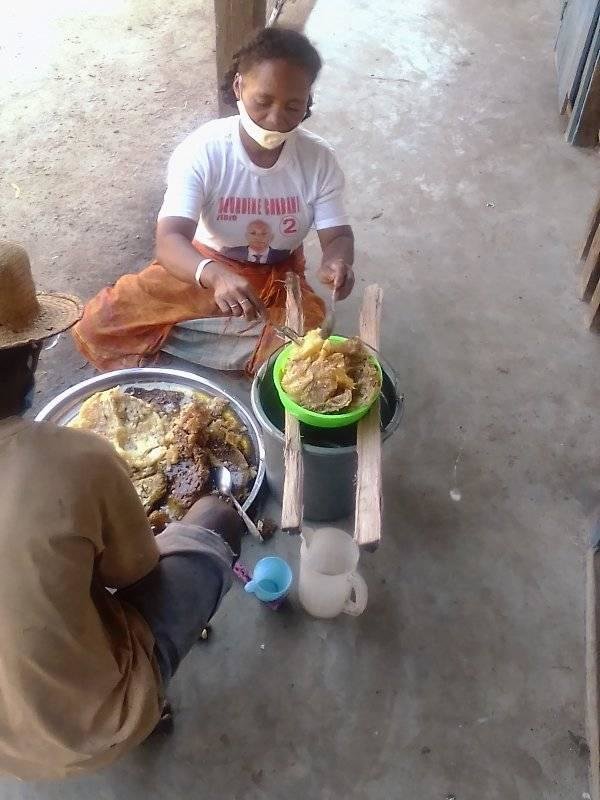By Rainie Schulte | Programme Officer
Honey bees need nectar to produce honey. During the winter months, the lack of flowering plants means beekeepers can’t harvest honey. Bees also need to make up for the loss of nectar in their diet so honey bees eat the honey stores in the hive, and beekeepers may even need to feed their colonies with sugar water to prevent them from absconding.
With the transition from winter to spring in Madagascar has come an abundance of flowers, resulting in the start of the honey harvesting season. One of our beekeepers in Tsagnoriha has already harvested 20 litres of honey from just four of his hives! During this more productive season, more and more beekeepers have been adding ‘supers’ to expand their beehives. A super is a second level placed on top of a strong hive. Adding a super to a strong hive gives the colony more space to make honeycomb. The bees have more space to fill with honey and wax, providing the beekeeper with more to harvest, without disturbing the brood chamber in the hive body.
To harvest honey, the beekeeper uses a smoker. Smoke calms the bees, so honeycomb can be removed and cut away from the top bar. The honey and wax then need to be separated from one another. To do this, beekeepers scrape off the caps that seal honey into each cell of the honeycomb, and put the pieces into a cloth or a fine mesh colander over a bucket, to collect the clean, filtered honey. This filtering process removes contaminants from the honey and ensures that it is of good quality. After filtering, the honey can be put into bottles or jars to be transported to the market and sold.
Once the honey has been harvested, only the wax caps are left. Beekeepers can then melt these together to sell or use in making household items, like candles and soap. Unfortunately, using beeswax isn’t common in the Anosy region yet, but SEED is hoping to change that! Increasing knowledge and understanding of how to use wax is one way for our beekeepers to expand their income. The Renitantely team is exploring how to increase the use of beeswax, such as showing beekeepers how to make candles to sell or use within the household. SEED will also look for possible buyers to further expand the beekeepers’ options for their wax harvest.
Project reports on GlobalGiving are posted directly to globalgiving.org by Project Leaders as they are completed, generally every 3-4 months. To protect the integrity of these documents, GlobalGiving does not alter them; therefore you may find some language or formatting issues.
If you donate to this project or have donated to this project, you can recieve an email when this project posts a report. You can also subscribe for reports without donating.
Support this important cause by creating a personalized fundraising page.
Start a Fundraiser